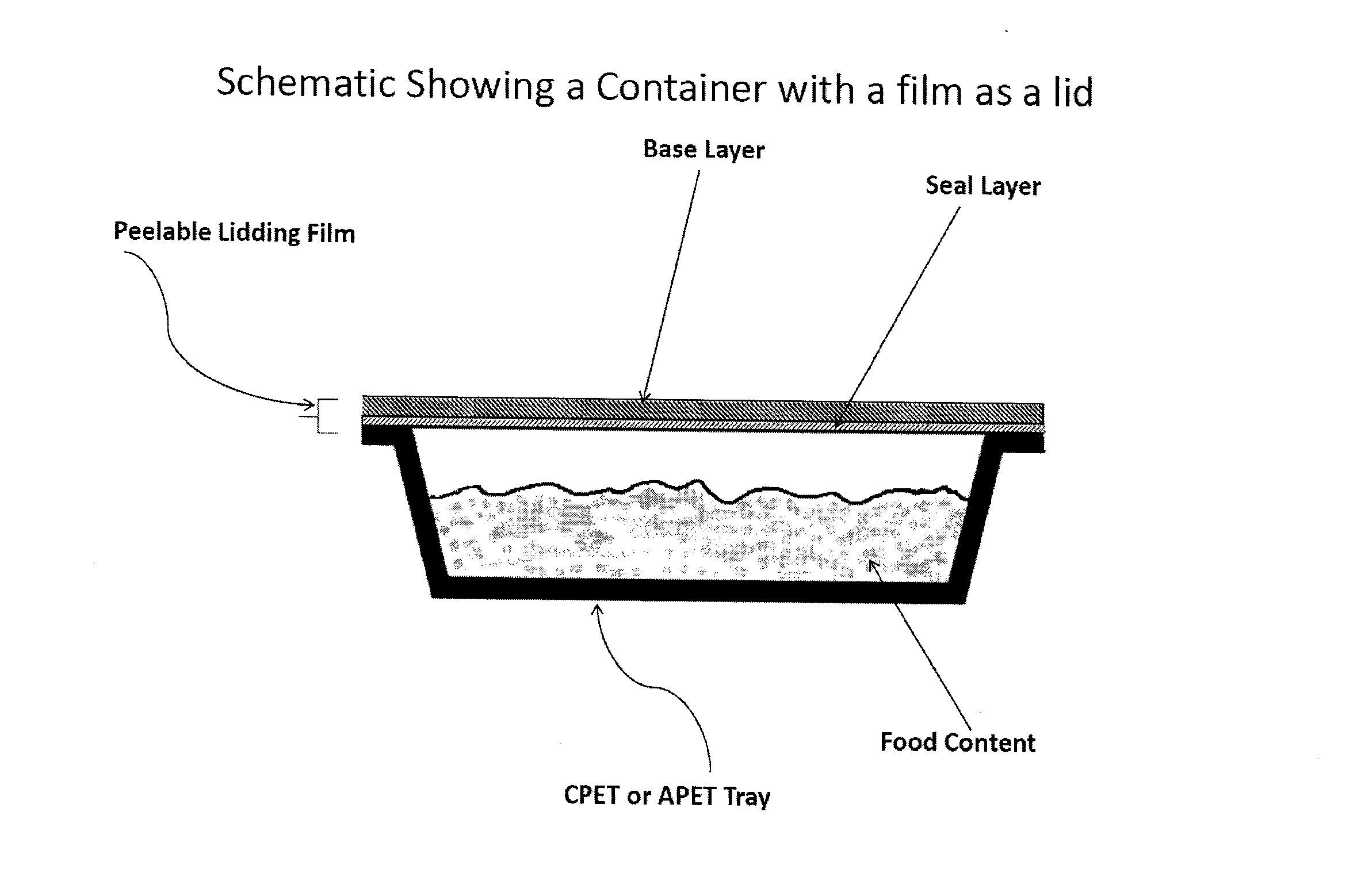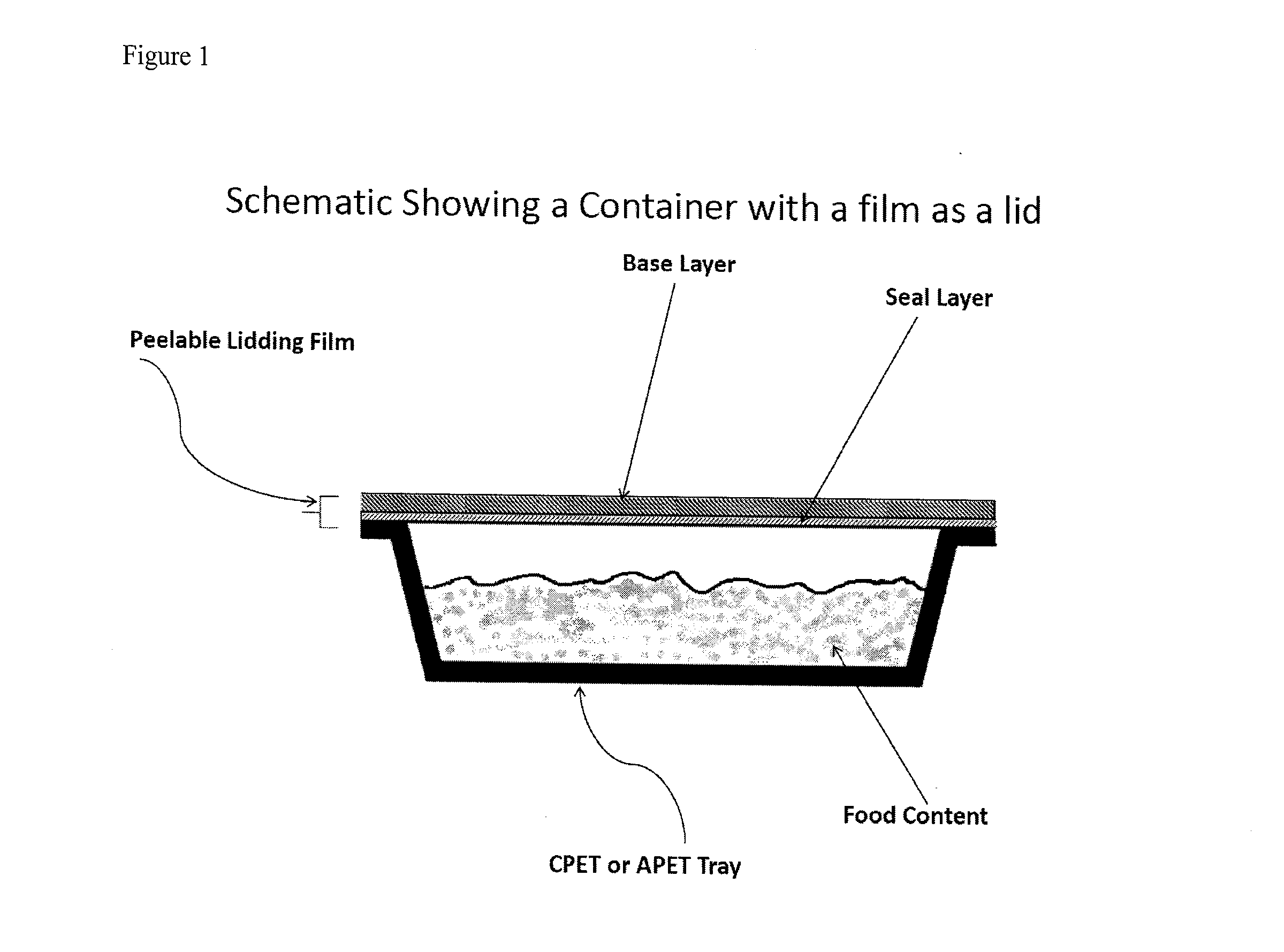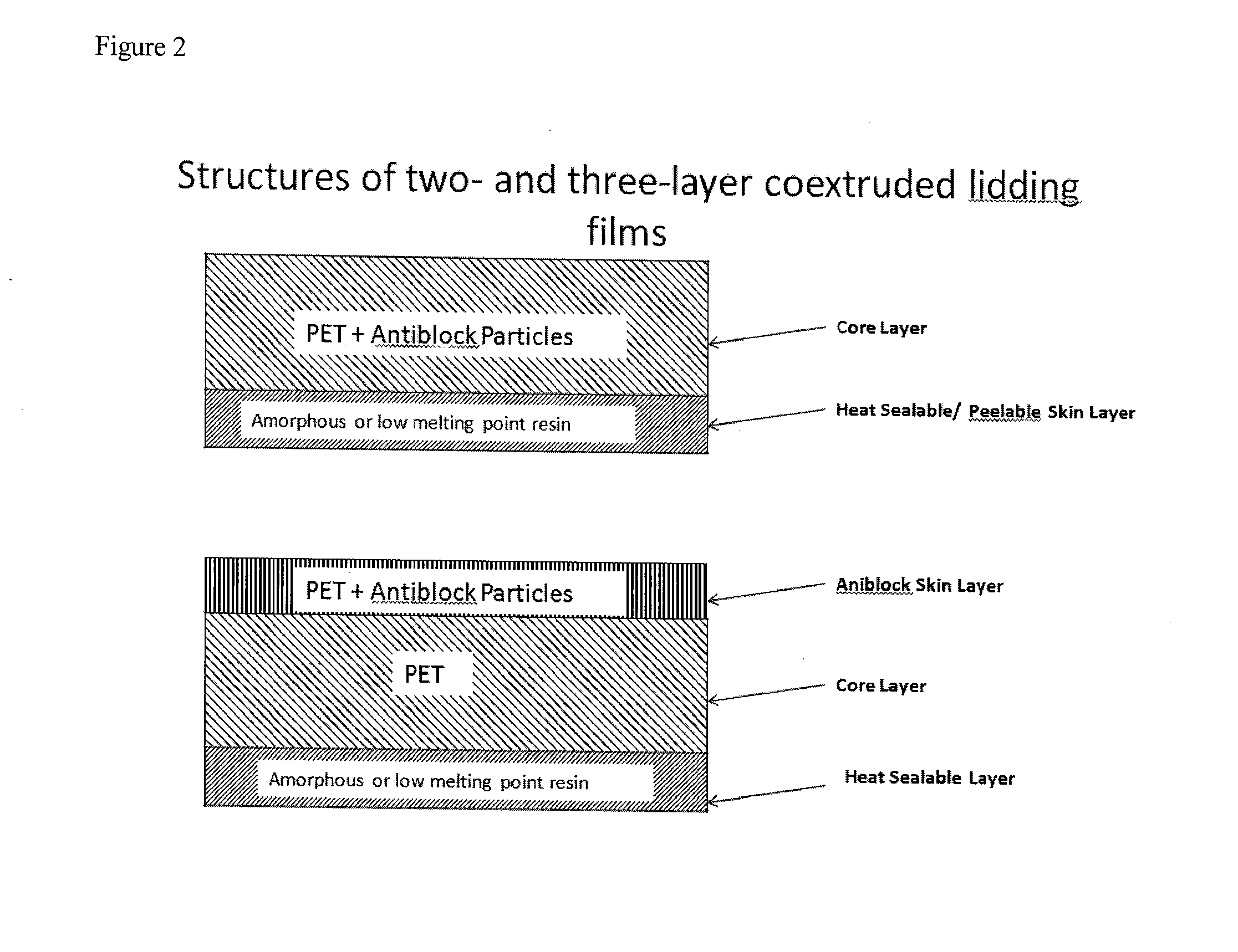Lidding structure based on aromatic polyester film, coextruded with a sealable/peelable epoxy-containing thermoplastic polymer
- Summary
- Abstract
- Description
- Claims
- Application Information
AI Technical Summary
Benefits of technology
Problems solved by technology
Method used
Image
Examples
example 1 (
Ex. 1)
[0049]A 236 gauge (55 μm) two-layer mono-axially drawn polyester film was prepared by co-extruding a skin layer having 100% Lotader AX8900 adjacent to a core layer having a 96:5 wt. % blend of PET Resin A and PET Resin B, using a three layer multimanifold die, with Lotader AX8900 fed into one of the skin layers by the first secondary extruder at 520 F and the 95:5 blend of PET Resin A / PET Resin fed into both the main of the second skin layer by the main extruder and the second secondary extruder, both at 530 F. The extrudate was cast on a cooling drum and subsequently stretched longitudinally at 180° F. by a ratio of 2.5. The resulting thickness of the Lotader AX8900 skin layer was about 7.5 μm.
[0050]The seal seam strengths on CPET are shown in Table 1 and plotted in FIG. 4. Clean peels were obtained in all cases and also at even higher temperatures (e.g. 450° F. not shown in Table 1)
example 2 (
Ex. 2)
[0051]The mono-axially stretched film of Example 1 was subsequently stretched by an additional 1.4 ratio along the machine direction and by a ratio of 3 in the transverse direction at a temperature of 195 F, resulting in a total stretch ratio of 3.5×3. The resulting film has a total thickness of 56 gauge (14 μm) with the Lotader AX8900 skin having a thickness around 2 μm. The seal seam strengths on CPET are shown in Table 1 and plotted in FIG. 4. Clean peels were obtained in all cases and also at even higher temperatures (e.g. 450° F. not shown in Table 2)
TABLE 1Seal Strength (lb / in) on CPET Trays for seal temperature:SIT200° F.225° F.250° F.275° F.300° F.325° F.350° F.375° F.400° F.425° F.(° F.)Ex. 10.700.520.931.031.131.221.331.231.371.37Ex. 20.330.320.450.590.550.771.010.840.660.80249CEx. 10.000.020.090.290.54415CEx. 2Not tested in view of low value at 375° F.0.180.32Destr.>400CEx. 3Not tested in view of low value at 375° F.0.210.360.82404CEx. 4Not tested in view of low val...
PUM
| Property | Measurement | Unit |
|---|---|---|
| Temperature | aaaaa | aaaaa |
| Temperature | aaaaa | aaaaa |
| Weight | aaaaa | aaaaa |
Abstract
Description
Claims
Application Information
 Login to View More
Login to View More - R&D Engineer
- R&D Manager
- IP Professional
- Industry Leading Data Capabilities
- Powerful AI technology
- Patent DNA Extraction
Browse by: Latest US Patents, China's latest patents, Technical Efficacy Thesaurus, Application Domain, Technology Topic, Popular Technical Reports.
© 2024 PatSnap. All rights reserved.Legal|Privacy policy|Modern Slavery Act Transparency Statement|Sitemap|About US| Contact US: help@patsnap.com










